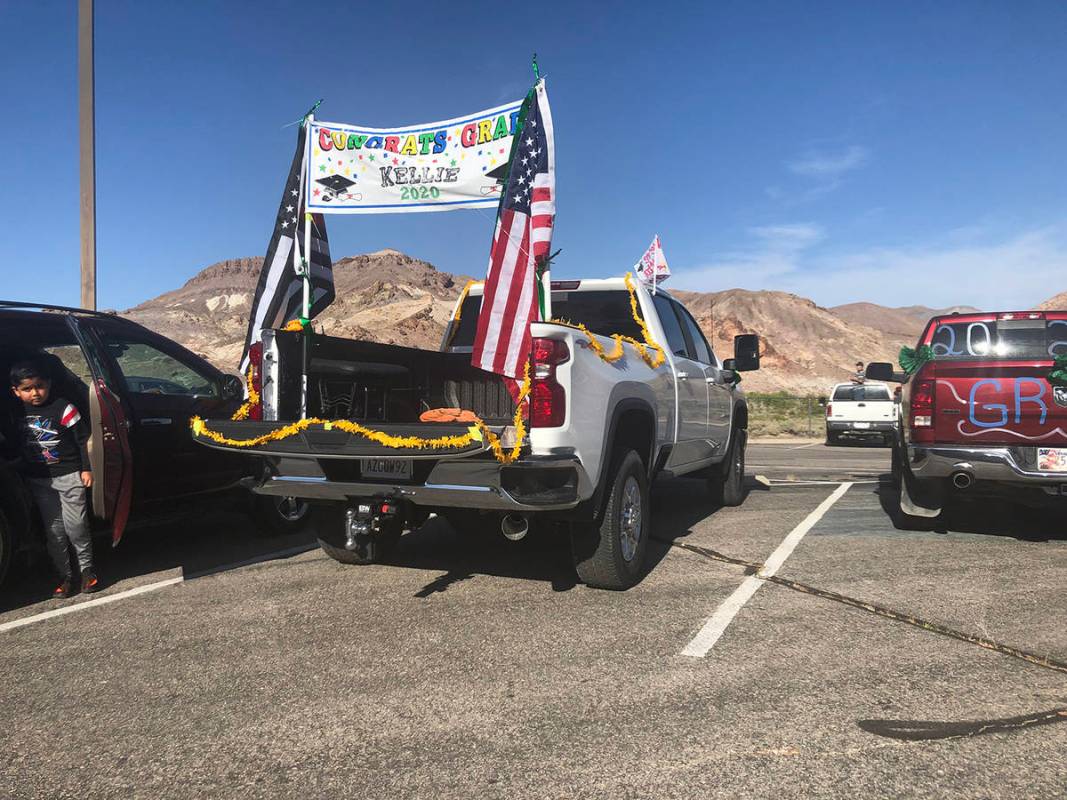
Nye County’s high school graduation rate of 77.27% was the second lowest in the state according to data released earlier this month by the Nevada Department of Education.
Only Churchill County, at 76.89%, trailed Nye County, although Churchill’s rate was an increase from the 72.95% from the Class of 2019 while Nye’s fell from 79.96%. Overall, Nye saw a decrease of 2.69% for the graduating class of 2020.
“In the Nye County School District, our goal is to have a 100% graduation rate, wanting all of our students at a minimum to earn a high school diploma,” said Nye County School District Superintendent Dr. Warren Shillingburg in an email. “We know COVID has had a negative impact on our student attendance, and we are doing all we can to reach out to our students to keep them in school and prepared to graduate.”
Statewide, the graduation rate for the class of 2020 was 82.57%, representing a slight decrease of 1.54 percentage points compared to the class of 2019 but the fourth consecutive year Nevada has graduated at least 80% of its students.
The COVID-19 pandemic has reportedly been a challenge to some students working to graduate.
Jessica Todtman, chief strategy officer for the Nevada Department of Education, said in an email, “We have heard anecdotes of students who were on track to graduate and then were not able to complete or succeed in their high school coursework due to factors such as access to devices or connectivity, housing or food instability/insecurity, supporting/caring for siblings, taking on work to supplement the family income, etc.”
The Nevada Department of Education partnered with Gov. Steve Sisolak on his Emergency Directive 014. The directive allowed Jhone Ebert, the superintendent of public instruction in Nevada, temporary powers to “waive or suspend laws and regulations that place an undue Burden on a students’ ability to graduate from high school,” Todtman said.
“In response to the directive, and in consultation with stakeholders, NDE issued the Class of 2020 Graduation Guidance, including a waiver for the civics assessment under NRS 389.009 to give students the best possible chance of earning a meaningful diploma despite the circumstances created by COVID-19,” Todtman said.
The class of 2020 also faced other challenges, including alternative graduation ceremonies due to the COVID-19 pandemic.
Statewide successes in graduation rates
In 13 of Nevada’s 17 school districts as well as the State Public Charter School Authority, students graduated at a higher rate than the state average of 82.57%.
Ten school districts showed increases in graduation rates from the previous year, with White Pine County School District showing the highest gain from 66.88% to 82.88%.
Other districts with large year-to-year increases in graduation rates include Mineral County (6.67 percentage points), the SPCSA (6.32), Lincoln County (6.19) and Humboldt County (5.18).
Career and Technical Education students maintained one of the highest graduation rates of all student groups at 93.22%.
Five districts — Pershing County (94.87%), Lincoln County (94.03%), Mineral County (91.67%), Humboldt County (91.29%) and Eureka County (90.91%) had 2020 graduation rates that exceeded 90 percent.
“Despite the challenges posed by COVID-19, the class of 2020, along with our educators and families, demonstrated persistence and resilience last spring,” said Jhone Ebert, state superintendent of public instruction. “While we are proud to see graduation rates increase in many areas of our state, the slight decrease in our statewide rate and among student groups means we have work ahead of us to improve.
“We remain committed to ensuring every single student has equitable access to high-quality learning opportunities so they can graduate with the skills they need to build a home, a life and a future.”
Graduation rates for most ethnic groups decreased slightly from 2019, although the rate for American Indian/Alaska Native students inched upward by 0.02 percentage points to 74.38%. Asian students fell .82 points to 93.36%, African American students fell 2.64 points to 69.54%, Hispanic/Latino students dropped 1.70 points to 81.25%, Pacific Islanders fell 3.48 points to 85.04%, and the rate for non-Hispanic white students dropped 0.91 points to 86.43%.
Students who identify with two or more races decreased 0.65 percentage points to 85.03%.
“These data underscore the importance of redoubling our efforts to achieve educational equity,” added Ebert. “In the coming year, the department will lead and collaborate with districts and schools to provide learning environments that promote the well-being of all students, but especially those students who face the steepest climb. This means providing a richer and more targeted set of opportunities — coupled with supports that are customized to meet the learning needs of particular student groups — so that all students are better equipped to thrive and succeed in the path of their choice.”